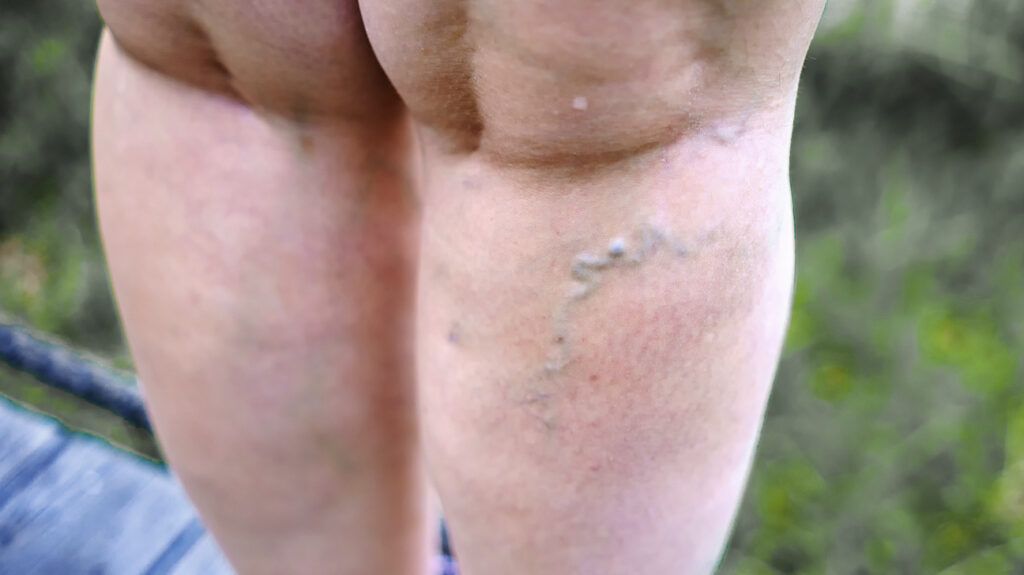Thrombophlebitis is the inflammation of a vein due to a blood clot. Symptoms may include swelling, pain, and warmth in the affected area, commonly in the leg. Treatment may include blood-thinning medications and wearing compression garments.
There are two main types of thrombophlebitis: superficial vein thrombosis (SVT) and deep vein thrombophlebitis (DVT), which is more serious.
This article provides an overview of the symptoms, causes, and treatment options for thrombophlebitis.

The symptoms of thrombophlebitis vary according to the severity and location of the clot. Thrombophlebitis can occur in any vein in the body but commonly affects the legs.
Symptoms of SVT include:
- tenderness or swelling in the affected area
- warm and itchy skin
- skin discoloration
- changes in skin texture or appearance
Symptoms of DVT include:
- pain or tenderness
- distended or bulging veins
- firmness or hardness of the vein
- darkened discoloration of the skin
People with DVT
Symptoms of PE include:
- chest pain
- coughing
- shortness of breath
- excessive sweating
- back pain
- lightheadedness or dizziness
- blueish lips or nails
A person needs to contact a doctor if they think they have a DVT.
Learn more about the symptoms of a blood clot.
Thrombophlebitis
Potential causes of thrombophlebitis
- injury to a vein from trauma or surgery
- reduced blood flow from prolonged immobilization, such as during long flights or bed rest
- increased blood viscosity, which refers to blood thickness, due to dehydration or certain medical conditions
Learn more about the causes of blood clots.
Risk factors for developing thrombophlebitis include:
- aging
- cancer
- smoking
- obesity
- pregnancy
- family history of blood clotting disorders
- use of hormonal contraceptives or hormone replacement therapy
- recent surgery
- injuries
Learn more about risk factors for blood clots.
Generally, diagnosing thrombophlebitis
Additional diagnostic tests may include:
Blood tests:
- D-dimer test: The D-dimer test checks the blood for a small protein fragment called D-dimer. A positive result may indicate the presence of elevated clotting mechanisms.
- Complete blood count (CBC): A CBC measures the levels of red and white blood cells and platelets.
- Coagulation studies: These tests evaluate the blood’s ability to clot and identify abnormalities in the clotting process.
Imaging tests:
- Duplex ultrasound: This noninvasive test allows doctors to see how blood moves through the veins and identify any blood clots.
- MRI scan: In some cases, an MRI scan may provide more detailed images of the veins and detect any abnormalities or blood clots.
- Venogram: This imaging test involves injecting a contrast dye into the veins and taking X-ray images to visualize blood clots or blockages.
Treatment for thrombophlebitis depends on the severity and location of the clot.
In general, treatment options for thrombophlebitis
- rest and elevation of the affected limb to reduce swelling and promote circulation
- nonsteroidal anti-inflammatory drugs, such as ibuprofen (Motrin)
- applying warm or cold compresses to alleviate discomfort and promote blood flow
- wearing compression stockings or bandages
- taking anticoagulant medications, which are blood thinners, such as Xa inhibitors, heparin, or warfarin
In rare cases, surgical intervention may be necessary to remove the blood clot or repair the affected vein.
The
DVT occurs in
Other complications of thrombophlebitis include:
- chronic edema, which refers to swelling
- chronic venous ulcers
- post-thrombotic syndrome
According to the
A person can help prevent blood clots from developing by:
- staying active and avoiding prolonged periods of inactivity
- maintaining a moderate weight
- avoiding smoking, if applicable
- avoiding tight clothing or restrictive garments that can impede blood flow
The outlook for individuals with thrombophlebitis depends on its underlying cause. With prompt treatment,
However, complications, such as persistent DVT or PE, can be serious and even
Thrombophlebitis is the inflammation of a vein due to a blood clot. It can occur near the skin or deeper and may lead to life threatening complications.
Injuries, inactivity, or thick blood can trigger it, while age, cancer, pregnancy, and certain medical conditions increase the risk.
Although most people recover well from thrombophlebitis, some may experience chronic swelling or develop blood clots in deeper veins that require immediate medical attention.
